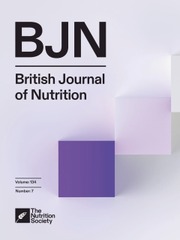No CrossRef data available.
Article contents
Association between dietary antioxidant quality score and non-alcoholic fatty liver: A propensity score–matched case-control study in Azar-Cohort population
Published online by Cambridge University Press: 21 November 2025
Abstract
The dietary antioxidant quality score (DAQs), is a valid and reliable tool for assessing the overall antioxidant potency of a diet, by considering the synergetic effects of dietary antioxidants. Non-alcoholic fatty liver (NAFLD), is linked to the imbalance of the body’s oxidant and anti-oxidant defense system. The objective of the present research was to investigate the possible associations between DAQs and odds of NAFLD in a large population of the Azar cohort study. The current propensity score–matched (PSM) case-control study was applied on a population of 14655 individuals. Demographic, anthropometric and dietary data were gathered, and biochemical markers were measured. The DAQS was evaluated based on the daily dietary intake of vitamin E, vitamin A, vitamin C, selenium, and zinc, compared to the daily recommended intake. The multivariable logistic regression analysis was employed to determine the association between DAQs with NAFLD related outcomes. After PSM matching based on age, gender and body mass index, participants were allocated into NAFLD, (n=660) and non-NAFLD (n=1234) groups. Findings indicated significant differences in age, weight, body mass index, weight to height ratio, triglyceride, high and low density lipoprotein cholesterols and dietary intake between percentiles of DAQs in NAFLD patients. Nonetheless, no significant associations were observed between DAQs and NAFLD before and after PSM. Comparing the results to prior researches, underlines the need for a comprehensive approach for exploring the association between dietary antioxidants, serum antioxidant level and biochemical indices in NAFLD, which is essential for the efficient clarification of the underlying mechanisms.
Keywords
Information
- Type
- Research Article
- Information
- Copyright
- © The Author(s), 2025. Published by Cambridge University Press on behalf of The Nutrition Society

